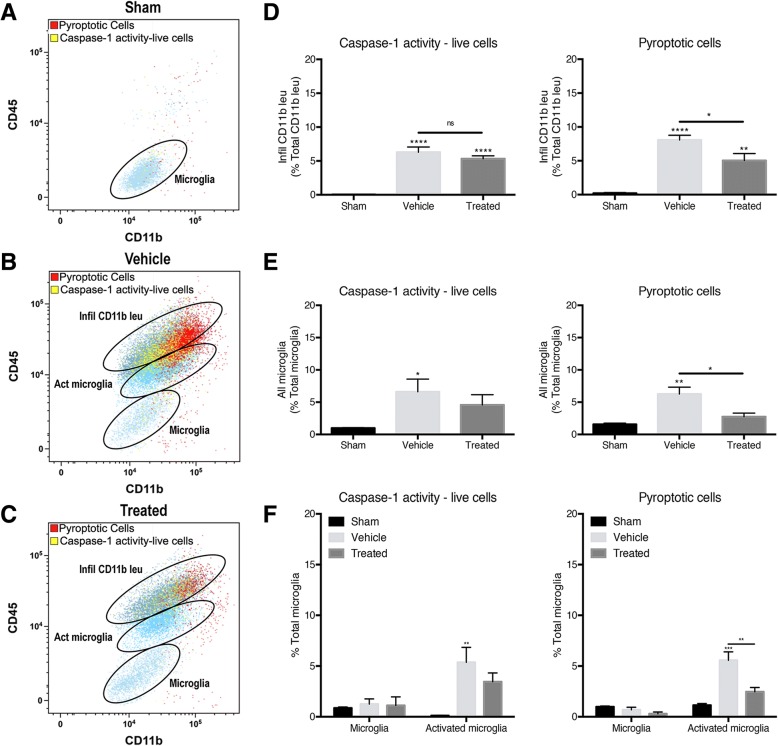Fig. 4.
Representative flow cytometry scatter plots of infiltrating CD11b+ leukocytes and microglia that are pyroptotic or caspase-1 activity expressing live cells from the ipsilateral cortex of a sham, b PBBI injured (vehicle), and c PBBI treated with anti-ASC. Cells previously gated for pyroptosis or live cells expressing caspase-1 activity were further gated into the three populations of cells: infiltrating CD11b+ leukocytes, activated microglia, and microglia. d Quantification of the number of infiltrating CD11b+ leukocytes that are live cells expressing caspase-1 activity and cells undergoing pyroptosis (expressing both increased amine reactivity and caspase-1 activity) 48 h post-injury. PBBI significantly increased the number of pyroptotic and caspase-1 activity-live infiltrating CD11b+ leukocytes. Treatment with an antibody against ASC significantly decreased the amount of infiltrating CD11b+ leukocytes undergoing pyroptosis. e Quantification of “all” microglia (surveying microglia + activated microglia). f Surveying microglia versus activated microglia that are live cells expressing caspase-1 activity or pyroptotic cells 48 h post-surgery. The number of pyroptotic microglia and live microglia expressing caspase-1 significantly increased after PBBI while treatment inhibiting ASC significantly decreased microglia undergoing pyroptosis. Splitting of the microglia population into surveying phenotype versus activated phenotype showed that activated microglia were the significant contributors to the number of live microglia expressing casepase-1 and overall microglial pyroptosis after PBBI. Treatment with anti-ASC significantly decreased the number of activated microglia undergoing pyroptosis. Data are presented as mean ± standard error of the mean. Statistical significance was determined with one-way ANOVA followed by Tukey’s post hoc test. *p < 0.05, **p < 0.01, ***p < 0.001, ****p < 0.0001. n = 5 per group

